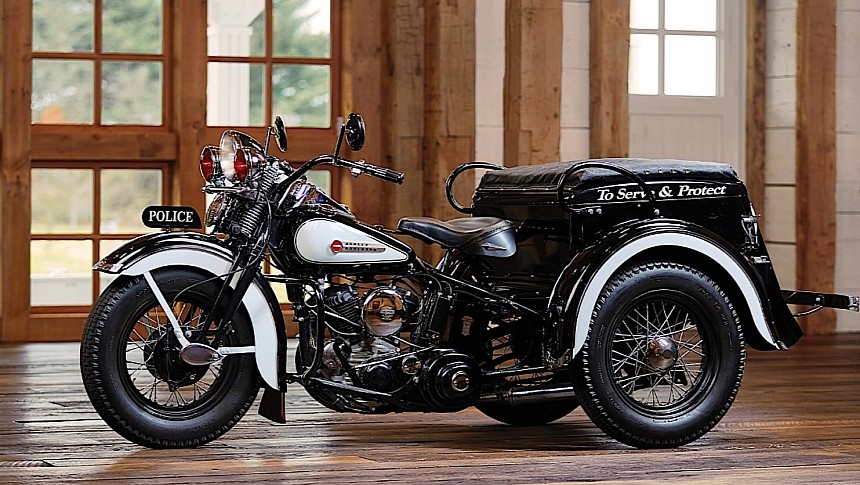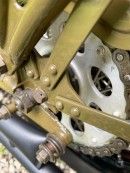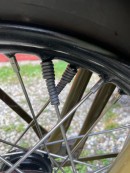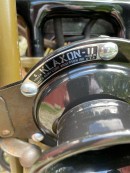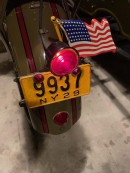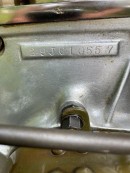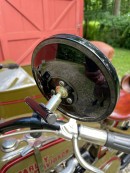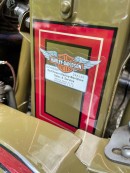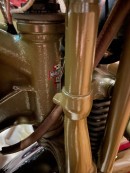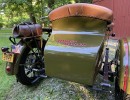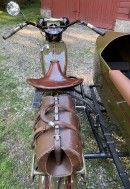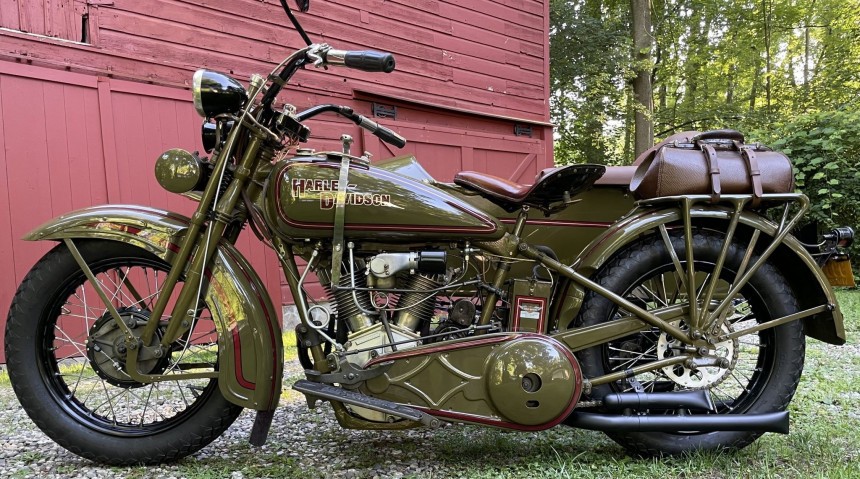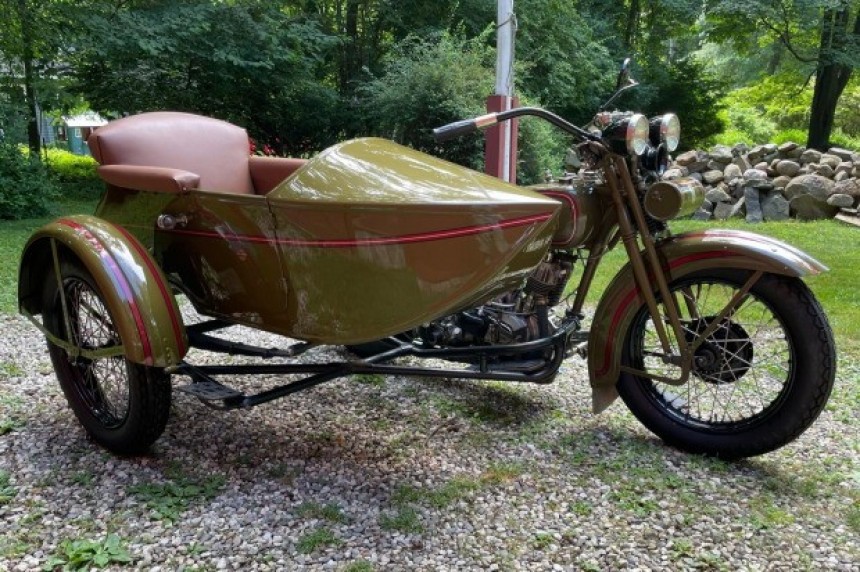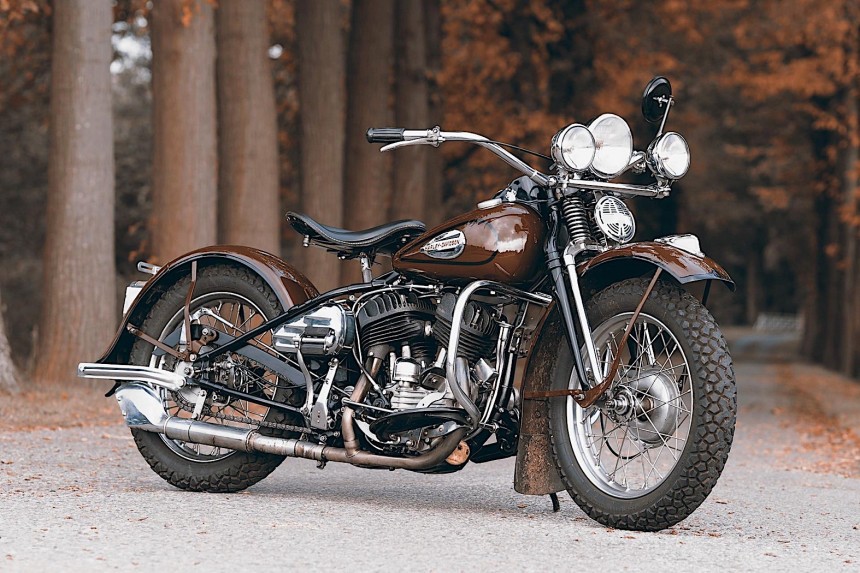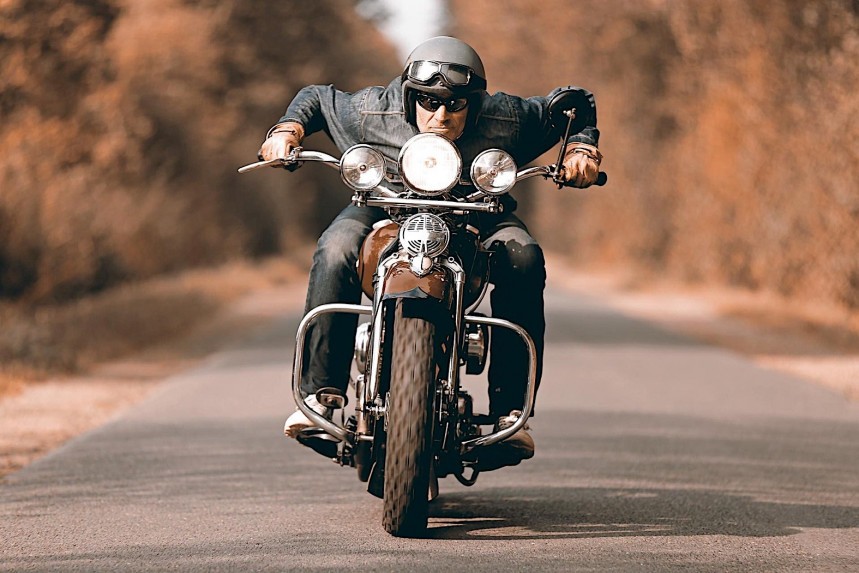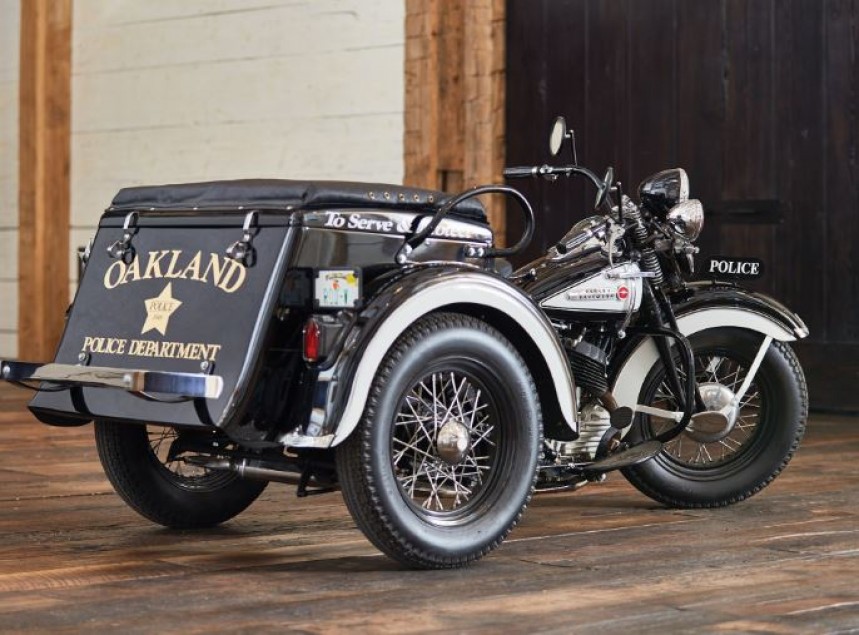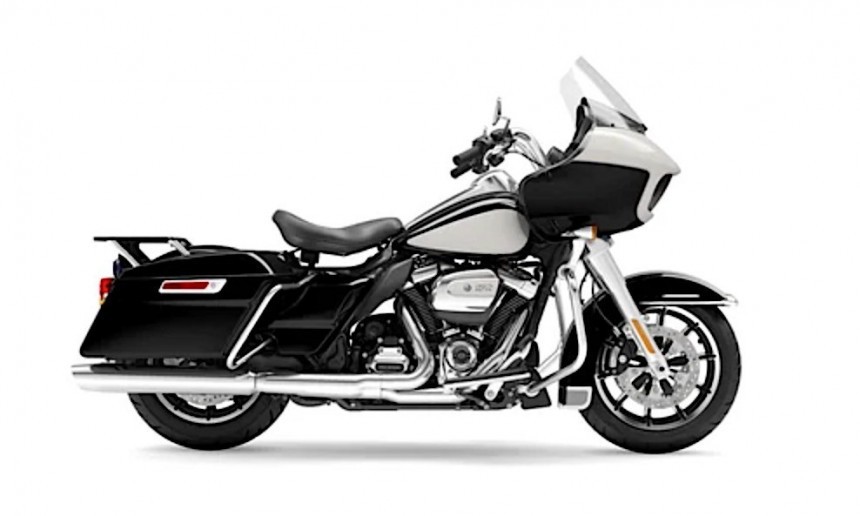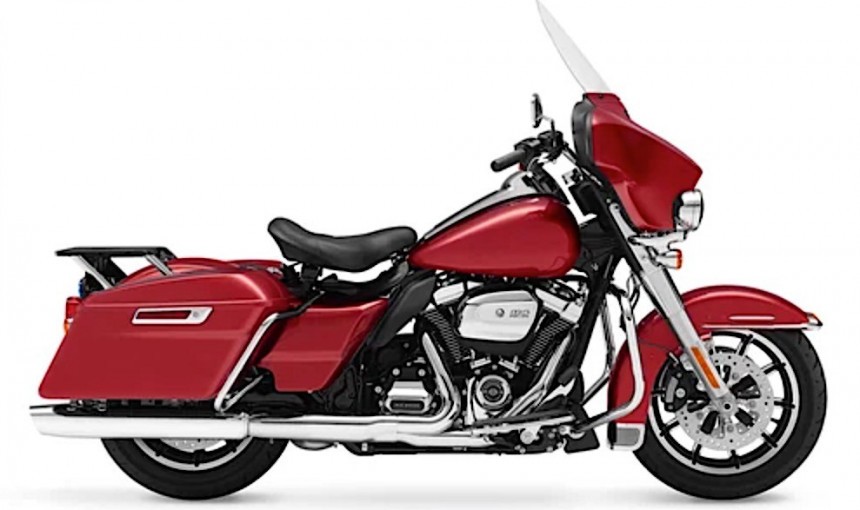Exactly 120 years ago, two guys from over in Milwaukee, Wisconsin, decided those new machines on two wheels they kept hearing about were the way forward in life for them. Their names were William S. Harley and Arthur Davidson, and their association and subsequent dealings would give birth to one of the most potent brands and important companies in the world.
As it presents itself today, the bike maker needs little introduction. We all know its history, its struggles, and its successes, and to some degree there isn't a single human on this planet with the slightest interest in motorcycles who doesn't feel one way or another about the company.
Whether you like it or not, Harley-Davidson is a name whose importance goes far beyond selling this many bikes or employing this many people. Because it's so old, it was also part of the most important events in human history and was also heavily involved in some of them.
As a way for us to recognize all of the above, we decided to have a closer look at the less-known motorcycles Harley made over the decades. Ok, maybe not less known, but certainly less visible thanks to their more specialized purpose.
I'm talking here about the bikes the Milwaukee behemoth rolled out over the years to serve the needs of the military, law enforcement, and at times even rescue services. Bikes just as spectacular (and in some cases even more so) as their road-going siblings, that certainly deserve their time under the spotlight.
And that's exactly what we're going to give them in the lines below, a much closer look and at times a dive into the history of our species.
By the time the First World War engulfed the planet in 1914, Harley-Davidson was already a kind of household name in American minds. It had already produced its first V-Twin engine, the so-called F-head that entered production in 1911. Installed in the Model 7D, in turned the bike into the first successful Harley in history – after all, some 5,600 of them were made, which for a company so young and a niche so exotic back then means quite a lot.
When the war started the bike was still in production, and kept on rolling because despite the turmoil between Europe's largest empires, the U.S. had not yet been drawn into the conflict, and it would not be so until 1917.
Even so, the bike maker, as did most other major players in America's industries back then, was getting ready for the conflict. For Harley' that meant rolling out a special version of another bike it made back then for civilians, the J.
This family of bikes was born in 1915 for use by the masses, but its military version didn't fall far behind. Because the requirements of using them for military purposes are entirely different than those for road-going bikes, the Army J differed quite a bit from its Average Joe counterpart.
First up, it had a 61ci engine in the frame of the same F-head family (civilian versions also came with 74ci engines), capable of developing 15 horsepower. A three-speed hand-shift transmission controlled the engine.
The bike came with a front suspension, and it was equipped with a gas headlamp instead of an electric one. It only had brakes on the rear wheel.
Legend has it that the first time a military Harley was used on the battlefield was not over in Europe, but across the American border in Mexico. Before America entered the Great War, Mexican revolutionary leader Francisco Pancho Villa became the target of a U.S. Army punitive expedition.
The trip south, guns blazing, was led by American General John Pershing, who is said to have used several Harley-Davidson Js to chase his enemies across the Mexican desert. In spite of Pershing's military genius, which will become apparent on the battlefields of WWI, and the Harleys deployed against him, Villa evaded capture.
After America entered the war, Harley switched production to accommodate the demand for two-wheeled vehicles. Depending on intended use, they were fitted with machine guns or sidecars to serve as ambulances or transport. When weaponized, they became part of the then new mobile infantry units.
Most often Harley bikes (just like the ones made by rival Indian and a bunch of others, all of which served) were used to dispatch messages across the front. During this conflict Harley made around 20,000 Js for military use, which is less than half what Indian rolled out.
The J went on to stay in production until 1929, naturally in its civilian form. Not many of the military ones are still around today, so whenever one pops up it usually makes a splash on someone's finances.
Despite the J having started Harley's involvement in the production of military motorcycles, the WLA (aka Liberator) definitely steals the title as the most famous American Army bike, not only because of its specifications, but also on account of the simply huge numbers it was made in.
The years between the two World Wars were very troubled ones. Not taking into account the struggles of recovery, the Spanish flu, and the breakup of empires, the 1920s and 1930s had to face the Great Depression. It was an era that not only killed a lot of people, but also a lot of companies, with the American motorcycle-making industry being one of the hardest hit.
Of the approximately 100 motorcycle makers, large and small, that opened up shop in the early 1900s, only two were left by the time World War II began in Europe: Harley-Davidson and Indian.
How they did that remains a story for another time, but what's important is that when WWII broke, they were once again called upon to come to the aid of American and Allied forces. In Harley's case, the product offered to serve was the WLA.
After discontinuing the F-head engine in 1929, Harley introduced something called the Flathead. Deployed until its discontinuation in 1973 in 45ci, 74ci, and 80ci displacements, it formed the heart of many of the bikes made during those years, including the family known as the WL.
It's this breed that formed the basis for the WLA, the military version of the base bike, and the workhorse for countless army units deployed on fronts all over the world.
Just like it happened during the first global conflict, Harley started making WLAs long before America officially entered the war in 1941. It chose to fit it with the 45ci engine that developed 23 horsepower and was tied to a three-speed transmission. The whole bike weighed 540 pounds (245 kg).
It too differed from the civilian version, although in all fairness not by much. It was fitted with blackout lights to make them harder to distinguish at night, fenders to keep heavy mud away from the important bits, and a specially designed air filter. The crankcase breather was redesigned to keep water away.
Whereas the Harley-Davidson J played an active role as a combatant, the WLA was not weaponized at an official level (sure, soldiers could shoot from it, and probably some even improvised weapon mounts for the bike). For the duration of the war, it was primarily used for dispatch purposes, but also as convoy escorts and general transport duties behind the lines. Police duties were also on the table.
There was a lot of need for that, though, so the bike maker ended up making over 88,000 of them during the war years. They were not meant exclusively for the U.S. military, but for allies like Canada (which got its own version named WLC), the UK and South Africa as well.
It's the Soviet Union that came in second in terms of how many Harley it used during the war. It's estimated that some 33,000 of the total ended up in Russian hands to help them fight the Germans.
Given the huge number of WLAs made and their non-combatant status, it was only natural for a lot of them to survive. Taken home by soldiers, they turned into one of the most important models in motorcycling history, as they helped kickstart the rich custom industry we know and love today.
Production of the WLA stopped as soon as the war ended, but was briefly restarted for the Korean War of the early 1950s. Presently, great-condition WLAs exchange hands for large amounts of cash at auctions across the nation.
Whereas the involvement of the giant bike maker with the military was limited to the two World Wars and the two bikes, J and WLA, the company has been in bed with police departments for far longer, and in a much more continuous manner.
Almost a decade before the J served the needs of the Army on the front, in 1908, Harley delivered the first motorcycle to a police department, one in Detroit. At that time, the nation had under 200 miles (322 km) of paved roads, meaning the cars that existed at that time didn't have a lot of places they could go to in chase of bad guys. Motorbikes, on the other hand, were a lot more versatile, hence the logical choice.
The first Harley police bikes were nothing more than civilian two-wheelers, painted in a different color than the usual version and from time to time with special markings. They had no sirens, extra lights, or radios – these pieces of hardware only began to be offered in the 1920s. Yet it took Harley another full decade to come up with something that resembled a police bike in the proper sense of the word. Sort of.
The need for a specialized bike came as the U.S. rapidly increased the number of police departments it had, reaching some 3,000 of them at the end of the 1920s. Harley's response came in the form of the Servi-Car – a machine that's not technically a motorcycle, because it had three wheels. But it did get the job done, and proved extremely popular with officers.
Made from 1932 to 1973, the Servi-Car was not particularly designed with police use in mind, but as a utility vehicle. What that means is it could be used for anything from supply runs to joy trips. Officers rapidly saw its potential though, so history would record the ride as one of the most popular police vehicles ever made.
The trike was powered by a 45ci Flathead the kind Harley made back then, and for police use it was fitted with reverse controls. What that means is the machine had the throttle on the left and the hand shift on the right. This configuration allowed officers to accelerate using their left hand, freeing up the right one for whatever task they needed to perform on the side of the road.
Although the popularity of the Servi-Car made it the preferred choice of bike for police departments for a very long time, other Harleys got converted, more or less officially, for law enforcement use. It wasn't until the arrival of dedicated bikes that the company officially got with the program and offered people what they wanted.
At the time of writing the bike maker serves the needs of some 3,400 American police departments, but it's also present with its dedicated products in some 45 countries around the world. Unlike what was offered until recently, the new Harley bikes can be fitted right off the factory floor with everything a police officer would need to do their job.
Harley presently offers a choice of three dedicated bikes right off the factory floor: the Police Road Glide, Police Electra Glide, and Police Road King. All of them are powered by the same Milwaukee-Eight 114 engine rated at 122 ft. lb. of torque.
All three bikes come equipped with a series of technologies meant for road safety enhancements, as Harley calls them. That includes stuff like cornering ABS, traction control, hold control, and 2-in-1 exhaust. From the get-go the two-wheelers come with heated grips, law enforcement blue license plate marker, and dual tapered mufflers over the exhaust.
Because they are meant for special use these three models can also be fitted with their own sidecar, a choice police departments have always liked, probably not in small part because such a configuration reminds them of the Servi-Car of old.
Technically speaking, all of the current Harley products for this segment are only meant for police use, but if you try really hard, dealers can be convinced to let them go into civilian hands as well. Minus, of course, sirens, lights and the such. Also to please the civilian public Harley is selling from time to time something called the Peace Officer Electra Glide Special Edition, dedicated to off-duty police officers.
As long and extensive as Harley's relationship with law enforcement is, not the same can be said about first responders. Yet in recent times the bike maker cooked up something for them as well, pieces of hardware that in 2023 manifest themselves as the Rescue Electra Glide and Rescue Road King.
The rides are basically the street versions of the two bikes prepped, just like the Police versions, for first responders. Also powered by the same Milwaukee-Eight 114 engine, they too come with the same safety enhancements as the ones meant for law enforcement people.
The lineup of two recuse bikes is topped by the Firefighter Electra Glide Special Edition. This one is, just like the Peace Officer, meant primarily for off-duty firefighters. That surely gives a new dimension to the "take your work home with you" phrase.
The above bikes are all there is to what Harley-Davidson had to offer over the years as tools not to be used by civilians. Or, at least that was the primary purpose, as for every single one of them people found ways to turn them into constant apparitions on our roads.
Because, as you all know, there's nothing anyone can do to stop the spread of something amazing.
Whether you like it or not, Harley-Davidson is a name whose importance goes far beyond selling this many bikes or employing this many people. Because it's so old, it was also part of the most important events in human history and was also heavily involved in some of them.
As a way for us to recognize all of the above, we decided to have a closer look at the less-known motorcycles Harley made over the decades. Ok, maybe not less known, but certainly less visible thanks to their more specialized purpose.
I'm talking here about the bikes the Milwaukee behemoth rolled out over the years to serve the needs of the military, law enforcement, and at times even rescue services. Bikes just as spectacular (and in some cases even more so) as their road-going siblings, that certainly deserve their time under the spotlight.
And that's exactly what we're going to give them in the lines below, a much closer look and at times a dive into the history of our species.
Harley-Davidson J
When the war started the bike was still in production, and kept on rolling because despite the turmoil between Europe's largest empires, the U.S. had not yet been drawn into the conflict, and it would not be so until 1917.
Even so, the bike maker, as did most other major players in America's industries back then, was getting ready for the conflict. For Harley' that meant rolling out a special version of another bike it made back then for civilians, the J.
This family of bikes was born in 1915 for use by the masses, but its military version didn't fall far behind. Because the requirements of using them for military purposes are entirely different than those for road-going bikes, the Army J differed quite a bit from its Average Joe counterpart.
First up, it had a 61ci engine in the frame of the same F-head family (civilian versions also came with 74ci engines), capable of developing 15 horsepower. A three-speed hand-shift transmission controlled the engine.
Legend has it that the first time a military Harley was used on the battlefield was not over in Europe, but across the American border in Mexico. Before America entered the Great War, Mexican revolutionary leader Francisco Pancho Villa became the target of a U.S. Army punitive expedition.
The trip south, guns blazing, was led by American General John Pershing, who is said to have used several Harley-Davidson Js to chase his enemies across the Mexican desert. In spite of Pershing's military genius, which will become apparent on the battlefields of WWI, and the Harleys deployed against him, Villa evaded capture.
After America entered the war, Harley switched production to accommodate the demand for two-wheeled vehicles. Depending on intended use, they were fitted with machine guns or sidecars to serve as ambulances or transport. When weaponized, they became part of the then new mobile infantry units.
Most often Harley bikes (just like the ones made by rival Indian and a bunch of others, all of which served) were used to dispatch messages across the front. During this conflict Harley made around 20,000 Js for military use, which is less than half what Indian rolled out.
The J went on to stay in production until 1929, naturally in its civilian form. Not many of the military ones are still around today, so whenever one pops up it usually makes a splash on someone's finances.
Harley-Davidson WLA Liberator
The years between the two World Wars were very troubled ones. Not taking into account the struggles of recovery, the Spanish flu, and the breakup of empires, the 1920s and 1930s had to face the Great Depression. It was an era that not only killed a lot of people, but also a lot of companies, with the American motorcycle-making industry being one of the hardest hit.
Of the approximately 100 motorcycle makers, large and small, that opened up shop in the early 1900s, only two were left by the time World War II began in Europe: Harley-Davidson and Indian.
How they did that remains a story for another time, but what's important is that when WWII broke, they were once again called upon to come to the aid of American and Allied forces. In Harley's case, the product offered to serve was the WLA.
After discontinuing the F-head engine in 1929, Harley introduced something called the Flathead. Deployed until its discontinuation in 1973 in 45ci, 74ci, and 80ci displacements, it formed the heart of many of the bikes made during those years, including the family known as the WL.
It's this breed that formed the basis for the WLA, the military version of the base bike, and the workhorse for countless army units deployed on fronts all over the world.
Just like it happened during the first global conflict, Harley started making WLAs long before America officially entered the war in 1941. It chose to fit it with the 45ci engine that developed 23 horsepower and was tied to a three-speed transmission. The whole bike weighed 540 pounds (245 kg).
Whereas the Harley-Davidson J played an active role as a combatant, the WLA was not weaponized at an official level (sure, soldiers could shoot from it, and probably some even improvised weapon mounts for the bike). For the duration of the war, it was primarily used for dispatch purposes, but also as convoy escorts and general transport duties behind the lines. Police duties were also on the table.
There was a lot of need for that, though, so the bike maker ended up making over 88,000 of them during the war years. They were not meant exclusively for the U.S. military, but for allies like Canada (which got its own version named WLC), the UK and South Africa as well.
It's the Soviet Union that came in second in terms of how many Harley it used during the war. It's estimated that some 33,000 of the total ended up in Russian hands to help them fight the Germans.
Given the huge number of WLAs made and their non-combatant status, it was only natural for a lot of them to survive. Taken home by soldiers, they turned into one of the most important models in motorcycling history, as they helped kickstart the rich custom industry we know and love today.
Production of the WLA stopped as soon as the war ended, but was briefly restarted for the Korean War of the early 1950s. Presently, great-condition WLAs exchange hands for large amounts of cash at auctions across the nation.
Harley-Davidson Servi-Car
Almost a decade before the J served the needs of the Army on the front, in 1908, Harley delivered the first motorcycle to a police department, one in Detroit. At that time, the nation had under 200 miles (322 km) of paved roads, meaning the cars that existed at that time didn't have a lot of places they could go to in chase of bad guys. Motorbikes, on the other hand, were a lot more versatile, hence the logical choice.
The first Harley police bikes were nothing more than civilian two-wheelers, painted in a different color than the usual version and from time to time with special markings. They had no sirens, extra lights, or radios – these pieces of hardware only began to be offered in the 1920s. Yet it took Harley another full decade to come up with something that resembled a police bike in the proper sense of the word. Sort of.
The need for a specialized bike came as the U.S. rapidly increased the number of police departments it had, reaching some 3,000 of them at the end of the 1920s. Harley's response came in the form of the Servi-Car – a machine that's not technically a motorcycle, because it had three wheels. But it did get the job done, and proved extremely popular with officers.
Made from 1932 to 1973, the Servi-Car was not particularly designed with police use in mind, but as a utility vehicle. What that means is it could be used for anything from supply runs to joy trips. Officers rapidly saw its potential though, so history would record the ride as one of the most popular police vehicles ever made.
The trike was powered by a 45ci Flathead the kind Harley made back then, and for police use it was fitted with reverse controls. What that means is the machine had the throttle on the left and the hand shift on the right. This configuration allowed officers to accelerate using their left hand, freeing up the right one for whatever task they needed to perform on the side of the road.
Harley-Davidson Police Bikes in 2023
At the time of writing the bike maker serves the needs of some 3,400 American police departments, but it's also present with its dedicated products in some 45 countries around the world. Unlike what was offered until recently, the new Harley bikes can be fitted right off the factory floor with everything a police officer would need to do their job.
Harley presently offers a choice of three dedicated bikes right off the factory floor: the Police Road Glide, Police Electra Glide, and Police Road King. All of them are powered by the same Milwaukee-Eight 114 engine rated at 122 ft. lb. of torque.
All three bikes come equipped with a series of technologies meant for road safety enhancements, as Harley calls them. That includes stuff like cornering ABS, traction control, hold control, and 2-in-1 exhaust. From the get-go the two-wheelers come with heated grips, law enforcement blue license plate marker, and dual tapered mufflers over the exhaust.
Because they are meant for special use these three models can also be fitted with their own sidecar, a choice police departments have always liked, probably not in small part because such a configuration reminds them of the Servi-Car of old.
Technically speaking, all of the current Harley products for this segment are only meant for police use, but if you try really hard, dealers can be convinced to let them go into civilian hands as well. Minus, of course, sirens, lights and the such. Also to please the civilian public Harley is selling from time to time something called the Peace Officer Electra Glide Special Edition, dedicated to off-duty police officers.
Harley-Davidson Rescue Bikes in 2023
The rides are basically the street versions of the two bikes prepped, just like the Police versions, for first responders. Also powered by the same Milwaukee-Eight 114 engine, they too come with the same safety enhancements as the ones meant for law enforcement people.
The lineup of two recuse bikes is topped by the Firefighter Electra Glide Special Edition. This one is, just like the Peace Officer, meant primarily for off-duty firefighters. That surely gives a new dimension to the "take your work home with you" phrase.
The above bikes are all there is to what Harley-Davidson had to offer over the years as tools not to be used by civilians. Or, at least that was the primary purpose, as for every single one of them people found ways to turn them into constant apparitions on our roads.
Because, as you all know, there's nothing anyone can do to stop the spread of something amazing.
